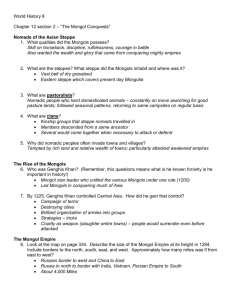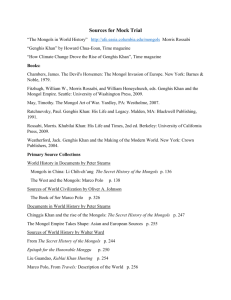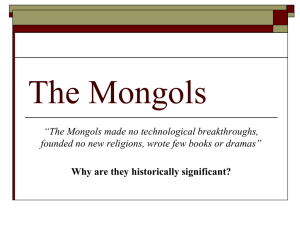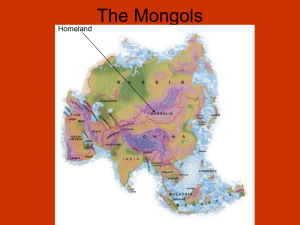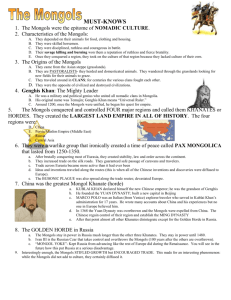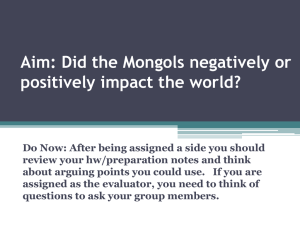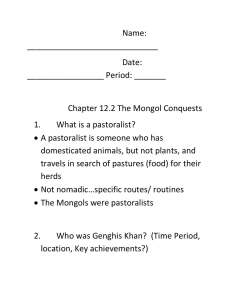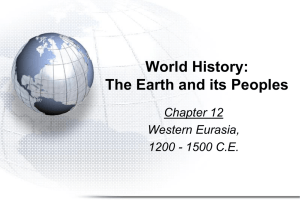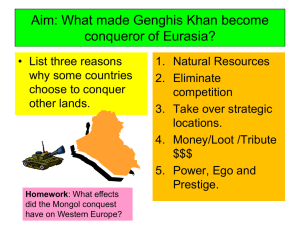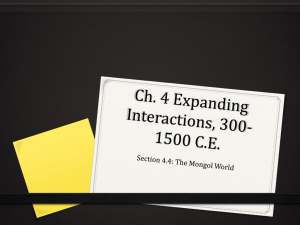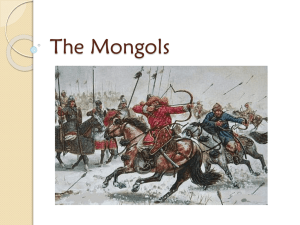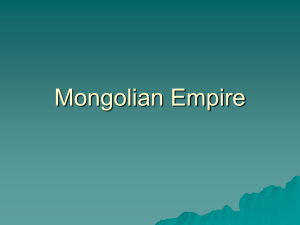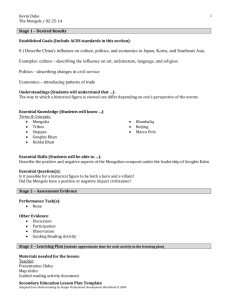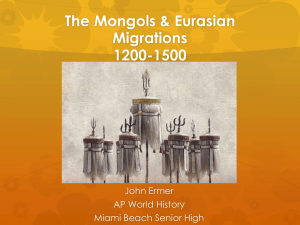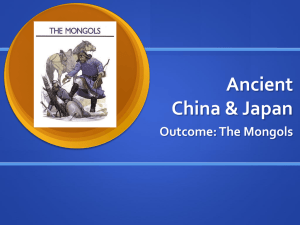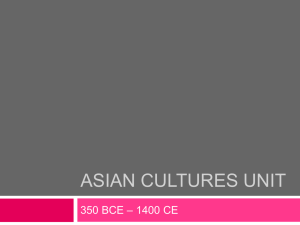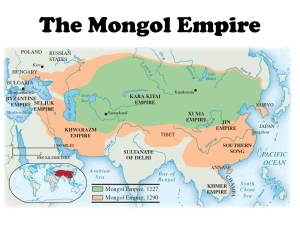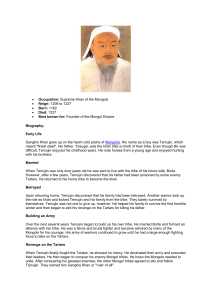12.2 The Mongol Conquests
advertisement
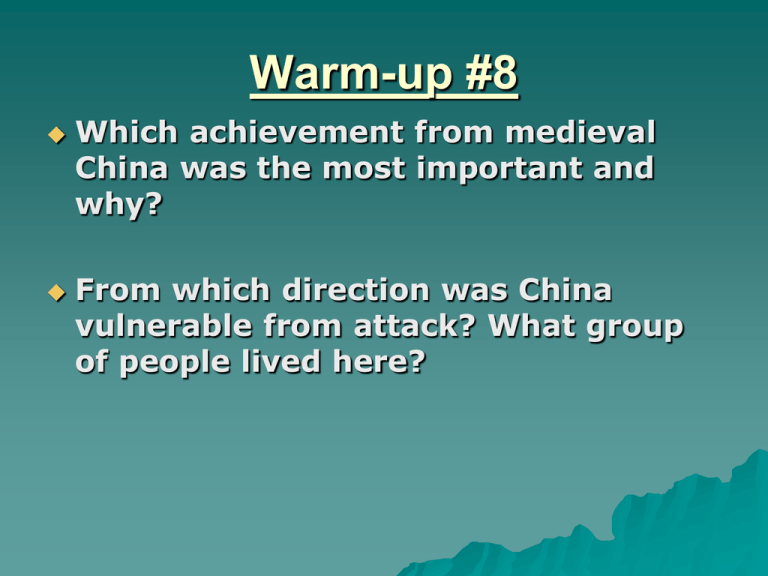
Warm-up #8 Which achievement from medieval China was the most important and why? From which direction was China vulnerable from attack? What group of people lived here? Empress Wu Reader What was Confucian thought regarding a woman as leader? Confucians thought that having a women rule would be unnatural. Why were women considered relatively free during the Tang dynasty? Women were considered to be relatively free during this time because they didn’t bind their feet, were not submissive, and a number of women contributed in politics and culture. Empress Wu Reader What occurred that allowed Wu Zetian to take over administrative power? She took power because her husband was died and her youngest son became official ruler, she ruled for him. He later removed himself as emperor and she took over officially. List two ways that Wu Zetain tried to elevate the position of women. She had scholars write biographies of famous women, gave her relatives high political positions. How would you rate Empress Wu’s reign? Provide two reasons to support your argument. Needs option and two supporting details. The Mongol Conquests How did the Mongols gain control of China? I. Nomads of the Asian Steppe A. Geography of the Steppe –Steppe—dry grassland of Eurasia—provide home for nomads. –Two main expanses: Central Asia to eastern Europe, and Mongolia. –Steppe has little rain, dramatic seasonal temperature differences. Visual 1 of Asian steppes B. Nomadic Life –Steppe nomads are pastoralists—herd domesticated animals. –skilled horse riders. –Nomads travel in clans— kin groups are linked by a common ancestor. Visual 2 nomadic tents C. Nomads and Settlements Nomads and people living in settled communities often interact. –Some interactions are peaceful like trade. –Sometimes interactions are violent nomads raid towns to seize wealth and goods. –Strong state or empire could protect its lands from these invasions. II. The Rise of the Mongols A. Genghis Khan Unites the Mongols –About 1200, Genghis Khan— ”universal ruler”—unites Mongols. –In early 1200s, he begins a campaign of conquest. –By 1225, Genghis Khan controls North China and parts of central Asia. B. Genghis the Conqueror –A brilliant organizer and strategist. –Uses brutality to terrorize his enemies and force surrenders. III. The Mongol Empire A. Genghis Khan dies in 1227. –Successors continue conquests for 50 years –By 1279 Kublai Khan (Genghis’ grandson) becomes emperor of the Yuan Dynasty. –The Mongols conquer territory from China to Poland. B. The Khanates –In east, Mongols conquer northern China and invade Korea. –In west, Mongols take Kiev and threaten Vienna and Venice. –In 1250s, Mongols turn their attention to Persia. –By 1260, Mongol Empire split into khanates of four regions. Khanate of the Great Khan Khanate of the Golden Horde (Mongolia & China) (Russia) Chagatai Khanate Ilkhanate (Persia) (Central Asia) C. The Mongols as Rulers –Mongol rulers are tolerant of other peoples and cultures. –Some Mongols adopt local ways, leading to a split among khanates. D. The Mongol Peace –Peaceful period from mid-1200s to mid-1300s is called Pax Mongolica. –There was much east-west trade and exchange of ideas during this period. Homework Finish Notes Read Chapter 7.4
